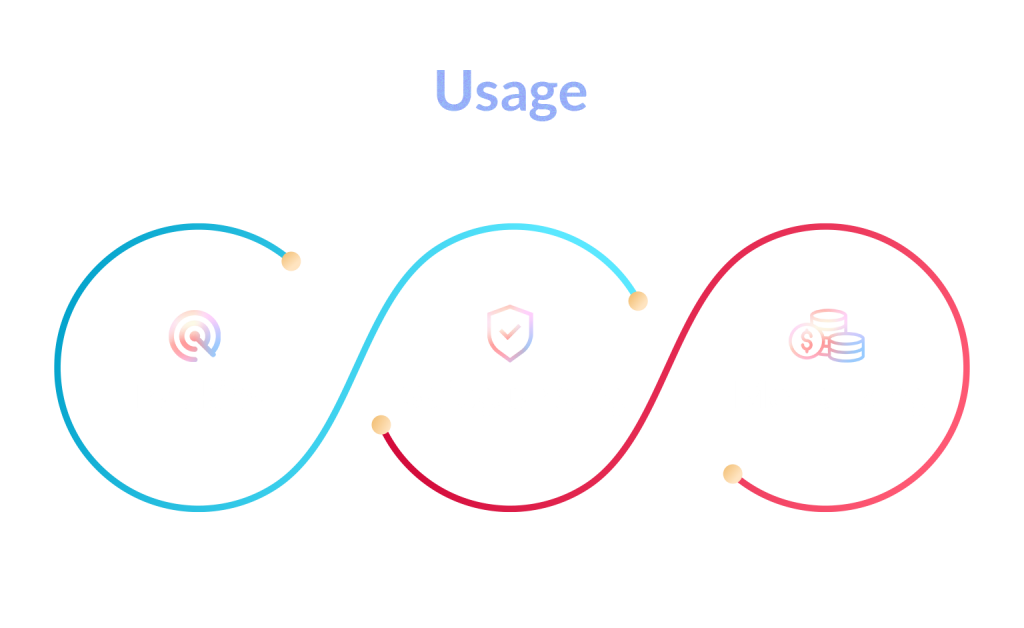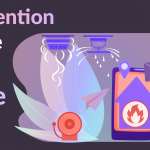Asset tracking has been one of the paramount use cases for IoT amongst businesses based on a very simple premise. Companies make better decisions if they just know where their stuff is. This makes complete sense, but sometimes, just knowing where your stuff is just isn’t enough. For some businesses, that want to take this a step further, they need to perform actions based on the current location of their assets.
This need is what gave rise to the idea of Geofencing. At its simplest, a geofence is a virtual perimeter for a real-world geographic area. A geo-fence could be dynamically generated (as in a radius around a point location) or match a predefined set of boundaries (such as school zones or neighborhood boundaries).
Your device alerts you when anything is inside or outside your specific geofence zones, whether industrial assets, pumps, tanks, chemicals, vehicles, sensors, etc. Geofencing also makes it easier to identify traffic movements and conduct accident investigations. In addition, local intelligence aids in last-mile delivery ensures on-time delivery and increase customer loyalty.
The GPS monitoring system’s geo-fencing feature was created to keep track of fleet drivers and ensure that they stayed within the borders set by their fleet firms. It will be a fantastic method for fleet managers to monitor around the clock. When fleet drivers enter or exit a designated area, the geofencing feature in a GPS tracking system helps enterprises respond appropriately and improve their experience.
When it comes to offering you peace of mind about where your assets are, geofencing and IoT are a winning mix. What is the relationship between IoT and this? Why do you require it?
What is IoT-enabled Geofencing, and How does it Work?
As a customer, you’ve definitely seen geofences – certain location-based advertising effectively implements a geofence when cellular or in-store wireless network “detects” you entering a specific territory and allows an advertiser to present you with an offer.

Geofencing experiences in the IoT are different. Geofencing is mainly used to manage mobile assets, such as tracking, safeguarding, and monetizing them. Therefore, we talk about Geofencing for IoT use cases centered outdoor.
Geofences are defined by software and are based on specified coordinates. When a user reaches the neighborhood of a geofence, they can opt-in and utilize an app or connect to free WiFi. When a user links to free WiFi, the software (which has geofencing capabilities) allows them to utilize or access services within the geofence. Geofences are used for a variety of purposes. The most popular are marketing-related.
For example, businesses can send them a push notification on their phones when customers enter a store. The SMS message usually contains a link to download an app or a website dedicated to the place. The sorts of devices you utilize to establish a geofence determine the geofence’s coverage and accuracy. Bluetooth beacons and WiFi routers are two such types of devices.

Bluetooth Devices and Geofencing
While cost is always a consideration, the choice between beacons and WiFi is less evident. Bluetooth-enabled devices, like Wi-Fi-enabled devices, can connect. Beacons are carefully positioned throughout a site when used for geofencing. Beacons utilize less electricity and use batteries because Bluetooth can only communicate small quantities of data. Standard beacons have an 80-meter range, whereas long-range beacons have a range of 300 meters.
Geofencing and WiFi Routers
WiFi routers are frequently preferred over Bluetooth beacons because they provide additional capabilities. WiFi offers internet connectivity to visitors and can also be utilized to send push notifications to attendees. Bluetooth beacons are less adaptable because they do not have an internet connection.
Beacons need less energy to operate, but they rely on batteries to be updated. Therefore, site managers must account for beacon maintenance based on the battery life of the beacons. WiFi routers require less physical maintenance and usually have simple configuration admin portals.
Applications of IoT-Enabled Geofencing

Geofencing can be used in a variety of ways. For example, you can use it in various settings to provide visitors and site managers with information on venue traffic and management of assets and their surroundings. The following are three uses for WiFi geofencing:
Childcare Services
In a fast-paced environment, finding child care might be complex. Geofencing can be used to keep track of where your kids are. In addition, parents can be warned via a perimeter when a child departs a zone. Today, you can use smartphones to implement this type of technology. When a youngster departs a delineated zone, a parent is promptly notified.
Telematics
The usage of zones for childcare services has similar applicability to telematics. However, It refers to assets rather than people. Companies can track assets by establishing a perimeter at a location or zone within a building or campus. A trigger is delivered to the asset/site manager when an asset leaves a designated spot, instructing them to take action.
Security in WAN Environments
Wide area networks are among the more intriguing applications of WiFi geofencing technology. Today, data security is more important than ever, especially with the rise of BYOD culture and the increasing number of new and unmanaged devices that might bring on-site.
Companies can disable specific functions of user devices by utilizing a secured zone. This might include employing smartphone cameras in particular places or sending security notifications when visitors reach a restricted area.
Benefits of IoT-enabled Geofencing

Increasing the Level of Safety and Security
Tracking a driver’s and vehicle’s whereabouts implies that someone is looking out for them, assessing their adherence to safety rules, and alerting managers if anything seems out of the norm. It also allows fleet owners/managers to know if a driver is stuck outside of a geofenced area, allowing them to contact the driver and dispatch assistance if necessary.
Reduces the Use of Unneeded Vehicles
GPS Vehicle tracking systems generate automated data that show how long a vehicle has been outside of a predetermined zone, allowing fleet managers to alert drivers and take appropriate action. In addition, it helps identify if a driver is regularly inappropriately utilizing a vehicle and eliminating that behavior within drivers using the geofencing feature, which saves fuel and person-hours.
Minimize Theft
The GPS monitoring system’s geofencing and landmark locating features enable fleet managers to recover stolen vehicles rapidly. GPS software shows the exact location of a vehicle, allowing companies to promptly alert authorities in the event of a missing or stolen vehicle and send them the specific area of the vehicle.
Conclusion
But it doesn’t end there; geofencing is just one facet of the fast-expanding geolocation services industry, which offers new possibilities, benefits, and opportunities. So how can your company use geofencing to increase efficiency, money, safety, and security? IoT-enabled geofencing is creating havoc globally with its multipurpose use cases and safety options. So to boost your services and production, IoT enabled geofencing system will help accelerate the overall business in real-time.





